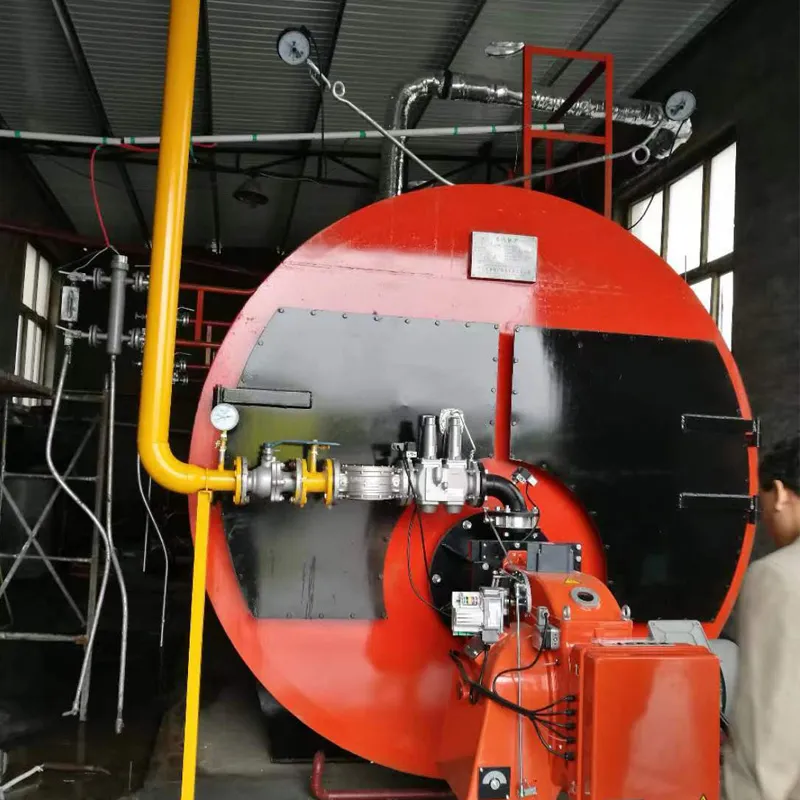
सेप . 24, 2024 09:01 Back to list
Comprehensive Guide to Steam Boiler Design Principles and Best Practices
Understanding Steam Boiler Design Key Principles and Considerations
Steam boilers are essential components in many industrial processes, providing the necessary steam for heating, power generation, and other applications. The design of a steam boiler is a complex task that involves a thorough understanding of thermodynamics, fluid mechanics, and material science. In this article, we will explore the key principles and considerations that go into the design of a steam boiler.
At the core of steam boiler design is the goal of efficiently converting water into steam. This process involves heating water to its boiling point, which requires a significant amount of energy. The boiler design must ensure that this energy is transferred efficiently from the fuel source to the water. The choice of fuel—be it natural gas, coal, oil, or biomass—can significantly impact the boiler's efficiency and emissions profile.
Understanding Steam Boiler Design Key Principles and Considerations
Another critical aspect of boiler design is the heat transfer mechanism. Efficient heat transfer is necessary to maximize steam production while minimizing fuel consumption. This involves the careful design of boiler components such as the furnace, heat exchangers, and economizers. Engineers must consider factors such as surface area, fluid flow rates, and temperature differentials to optimize the heat transfer process.
steam boiler design pdf

Material selection also plays a crucial role in the boiler's design. The materials used must withstand high temperatures and pressures while resisting corrosion and erosion. Common materials include carbon steel, stainless steel, and various alloys. The design must take into account the mechanical properties of these materials to ensure the boiler's safety and longevity.
Safety is a paramount concern in steam boiler design. Boilers operate under high pressure, and any failure can result in significant hazards. Therefore, safety features such as pressure relief valves, water level controls, and automatic shutdown systems must be incorporated into the design. Regular maintenance and inspection protocols are also essential to ensure the boiler operates safely throughout its lifespan.
Lastly, regulatory compliance cannot be overlooked in steam boiler design. Engineers must adhere to various local, national, and international standards that govern boiler construction and operation. These regulations are in place to ensure safety, environmental protection, and energy efficiency.
In conclusion, steam boiler design is a multi-faceted discipline that requires a deep understanding of various engineering principles. From choosing the right type of boiler to optimizing heat transfer and ensuring safety, every aspect of the design contributes to the boiler's overall performance and reliability. As industries continue to evolve, so too will the technologies and practices surrounding steam boiler design, leading to more efficient and sustainable energy solutions.
-
High-Efficiency Commercial Oil Fired Steam Boiler for Industry
NewsJul.30,2025
-
High-Efficiency Biomass Fired Thermal Oil Boiler Solutions
NewsJul.30,2025
-
High Efficiency Gas Fired Thermal Oil Boiler for Industrial Heating
NewsJul.29,2025
-
High-Efficiency Gas Fired Hot Water Boiler for Sale – Reliable & Affordable
NewsJul.29,2025
-
High Efficiency Biomass Fired Hot Water Boiler for Industrial and Commercial Use
NewsJul.29,2025
-
High-Efficiency Biomass Fired Hot Water Boiler for Industrial Use
NewsJul.28,2025
Related PRODUCTS






















